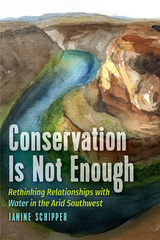8 start with A start with A
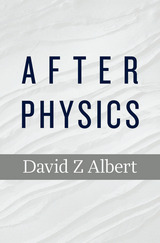
After Physics presents ambitious new essays about some of the deepest questions at the foundations of physics, by the physicist and philosopher David Albert. The book’s title alludes to the close connections between physics and metaphysics, much in evidence throughout these essays. It also alludes to the work of imagining what it would be like for the project of physical science—considered as an investigation into the fundamental laws of nature—to be complete.
Albert argues that the difference between the past and the future—traditionally regarded as a matter for metaphysical or conceptual or linguistic or phenomenological analysis—can be understood as a mechanical phenomenon of nature. In another essay he contends that all versions of quantum mechanics that are compatible with the special theory of relativity make it impossible, even in principle, to present the entirety of what can be said about the world as a narrative sequence of “befores” and “afters.” Any sensible and realistic way of solving the quantum-mechanical measurement problem, Albert claims in yet another essay, is ultimately going to force us to think of particles and fields, and even the very space of the standard scientific conception of the world, as approximate and emergent. Novel discussions of the problem of deriving principled limits on what can be known, measured, or communicated from our fundamental physical theories, along with a sweeping critique of the main attempts at making sense of probabilities in many-worlds interpretations of quantum mechanics, round out the collection.
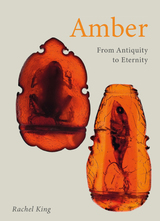
Amber: From Antiquity to Eternity is a history of human engagement with amber across three millennia. The book vividly describes our conceptions, stories, and political and scholarly disputes about amber, as well as issues of national and personal identity, religion, art, literature, music, and science. Rachel King rewrites amber’s history for the twenty-first century, tackling thorny ethical and moral questions regarding humanity’s relationship with amber in the past, as well our connection with it today. With the Earth facing unprecedented challenges, amber—the natural time capsule, and preserver of key information about the planet’s evolutional history—promises to offer invaluable insights into what comes next.


The Anatomy of Judgment was first published in 1990. Minnesota Archive Editions uses digital technology to make long-unavailable books once again accessible, and are published unaltered from the original University of Minnesota Press editions.
"The Anatomy of Judgment is a unique and valuable contribution to the literature of the social and humanistic contexts for science . . . The book will illuminate dark corners for any reader, and dozens of interesting points come to light." –Neil Greenberg, University of Tennessee
Tracing the emergence of science and the social institutions that govern it, The Anatomy of Judgment is an odyssey into what human thinking or judgment means. Philip Regal moves deftly from the history of Western philosophy to concepts of rationality in non-Western cultures, from the conceptual issues of the Salem witch trials to the basic structure of the human brain. The Anatomy of Judgment offers new perspectives on the workings of individual judgment and the social responsibility it entails.
Philip Regal is a professor of ecology and behavioral biology at the University of Minnesota. He served, during his pre- and postdoctoral work, as Coordinator's Appointee to the Mental Health Training Program at UCLA's Brain Research Institute.
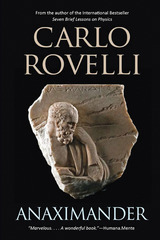
THIS EBOOK IS NO LONGER AVAILABLE.
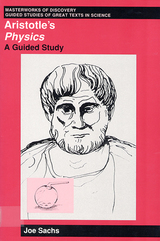
This is a new translation, with introduction, commentary, and an explanatory glossary.
"Sachs's translation and commentary rescue Aristotle's text from the rigid, pedantic, and misleading versions that have until now obscured his thought. Thanks to Sachs's superb guidance, the Physics comes alive as a profound dialectical inquiry whose insights into the enduring questions about nature, cause, change, time, and the 'infinite' are still pertinent today. Using such guided studies in class has been exhilarating both for myself and my students." ––Leon R. Kass, The Committee on Social Thought, University of Chicago
Aristotle’s Physics is the only complete and coherent book we have from the ancient world in which a thinker of the first rank seeks to say something about nature as a whole. For centuries, Aristotle’s inquiry into the causes and conditions of motion and rest dominated science and philosophy. To understand the intellectual assumptions of a powerful world view—and the roots of the Scientific Revolution—reading Aristotle is critical. Yet existing translations of Aristotle’s Physics have made it difficult to understand either Aristotle’s originality or the lasting value of his work.
In this volume in the Masterworks of Discovery series, Joe Sachs provides a new plain-spoken English translation of all of Aristotle’s classic treatise and accompanies it with a long interpretive introduction, a running explication of the text, and a helpful glossary. He succeeds brilliantly in fulfilling the aim of this innovative series: to give the general reader the tools to read and understand a masterwork of scientific discovery.
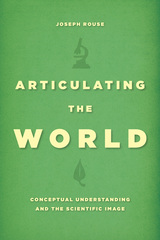
In Articulating the World, Joseph Rouse argues that the most pressing challenge for advocates of naturalism today is precisely this: to understand how to make sense of a scientific conception of nature as itself part of nature, scientifically understood. Drawing upon recent developments in evolutionary biology and the philosophy of science, Rouse defends naturalism in response to this challenge by revising both how we understand our scientific conception of the world and how we situate ourselves within it.
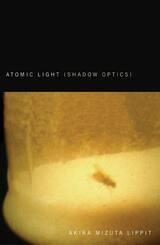
Akira Mizuta Lippit focuses on historical moments in which such modes of avisuality came into being—the arrival of cinema, which brought imagination to life; psychoanalysis, which exposed the psyche; the discovery of x-rays, which disclosed the inside of the body; and the “catastrophic light” of Hiroshima and Nagasaki, which instituted an era of atomic discourses.
With a taut, poetic style, Lippit produces speculative readings of secret and shadow archives and visual structures or phenomenologies of the inside, charting the materiality of what both can and cannot be seen in the radioactive light of the twentieth century.
Akira Mizuta Lippit is professor of cinema, comparative literature, and Japanese culture at the University of Southern California. He is the author of Electric Animal: Toward a Rhetoric of Wildlife (Minnesota, 2000).
READERS
Browse our collection.
PUBLISHERS
See BiblioVault's publisher services.
STUDENT SERVICES
Files for college accessibility offices.
UChicago Accessibility Resources
home | accessibility | search | about | contact us
BiblioVault ® 2001 - 2025
The University of Chicago Press






